
12 Dec 2000 - 31 Mar 2001
The exhibition The Sacred Art of Marriage - Persian Marriage Certificates of the Qajar Dynasty brings together for the very first time this collection of beautifully decorated certificates of marriage of Iran, which have thus far been a relatively unknown and unexamined area in the field of Islamic art. For centuries in Persia, something as simple and practical as a marriage document was transformed into an elaborate work of art.
Indeed, the act of marriage, union between man and woman, is a sacred one; the record of such worthy of being inscribed in gold and transformed into a precious decorated object.
Begun in pre-Islamic times, the practice of decorating marriage certificates underwent truly significant developments from the 14th to the 19th century AD (9th – 13th century AH), reaching artistic heights during the Safavid and Qajar dynasties. Alas, there are few surviving examples of Safavid period certificates and the certificates in this collection date from 1793 AD/1208 AH to 1929 AD/1348 AH. The Qajar Dynasty was established in 1794 AD by Agha Mohamad Khan Qajar, following the death of Karim Khan, and lasted till 1925 AD.
Agha Mohamad Khan laid the foundations for a uniform and stable empire based on the rule of the Safavids, one of the greatest Persian Islamic dynasties. Patronage of the arts during this period did not develop with any seriousness until the establishment of Fath Ali Shah on the throne in 1792 and the subsequent four decades of calm and prosperity that followed. Royal patronage was, thus, the impetus needed for the establishment of the distinct form of artistic representation that is Qajar art.
Marriage was seen as a link between two social groups, two tribes or two families. The dignitaries of the two families acted as witnesses and endorsed the contract between the two groups with their signatures and seals. It was customary for all members of Persian society to have decorated marriage contracts; with the wealthier classes and members of nobility having more elaborate contracts than the common people. The certificates are particularly valuable for the fascinating glimpses into the daily life of the period that they provide and the light they shed on the role of women in these societies. The detailed items listed in the bride’s dower section of the contract unveil a progressive approach adopted by the Persian Muslims to accord financial support to women. In this way, womenfolk, the traditional homemakers who raised and took care of their families, could be assured of a form of financial independence.
Executed in the form of either “scrolls” or “booklets”, the documents are written in beautiful calligraphic scripts and lavishly decorated with pigments of lapis lazuli (ultramarine), cinnabar (red) and gold. Scroll-type marriage certificates have the text usually placed slightly to the left of the center and closer to the bottom of the page, although there are exceptions with symmetrical space arrangements. The general appearance of booklet-type marriage certificates conforms to the style of illumination used in the traditional Persian arts of the book. The opening title pages show the most elaborate illumination and decoration with designated spaces for the seals and signatures of the Ulama and witnesses, either in the margins of the pages or on one or more separate pages at the end of the booklet. The borders are also often richly decorated.
General structure of the marriage certificate:
- Taĥmīdiyeh: Always written in Arabic, this section forms the opening of the certificate, displaying the popular verse “He is the One Who brings hearts together”; commonly followed by a vote of praise and the offering of thanks to the Lord for blessing people with the boon of marriage.
- Pīsh Neveshtār: The Pīsh Neveshtār or preface is usually written in Persian and Arabic, in an ornate form of prose that lyrically complement each other. The longest part of the text, it describes the aims and objectives of marriage using Persian metaphors, supported with Qur’ānic verses, Prophetic Traditions and prayers in Arabic.
- Introduction of the bridal couple: The section for the names and other formal information of the bride and the groom and their respective fathers. It usually begins with a statement referring to the auspicious timing of the ceremony, followed by the name of the groom and then the bride. The names of their respective fathers are then mentioned, along with, often elaborate and exaggerated, titles of honour and exaltations.
- Dower: The dower of the bride follows the introduction of herself and her father. Purely businesslike in its language, a detailed description is presented of the dower items including silver, gold, cash, real estate, land, houses, carpets, household utensils and servants.
- Concluding prayer: The documents draw to a close with a prayer for the increase in love between the newly weds and their children to come. Written in Arabic, these is little variation in this section between different certificates.
Date: The final statement of every marriage document is the date of the marriage ceremony. Most contracts give a full account of the date including the day, the month and the year, specified according to the lunar calendar.
Marriage certificates are celebratory documents. We are delighted to celebrate not only this one aspect of the artistic achievements of the Qajar period and Iranian culture, but also the scholarly advancements made in the study of this rare art form.
This exhibition is a collaboration between the Islamic Arts Museum Malaysia and the Iran National Archives Organization who have generously shared their collection with us. We hope that this exhibition will appeal not only to the aesthetic sensibilities of artists and art lovers alike, but also to scholars, historians and all those with an interest in civilization and culture.
*Publication for the exhibition is available at the Museum Shop; please click here for more details.